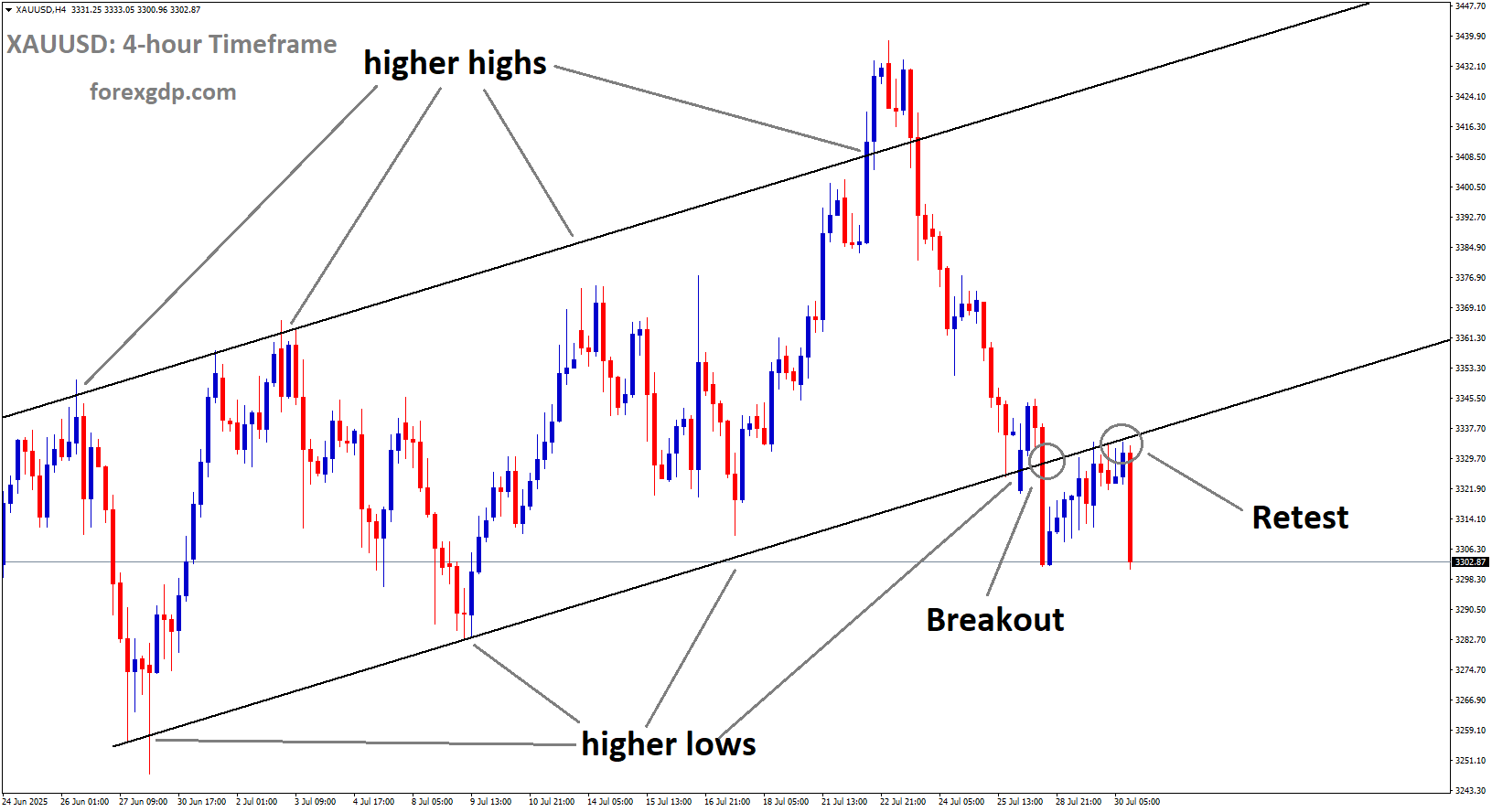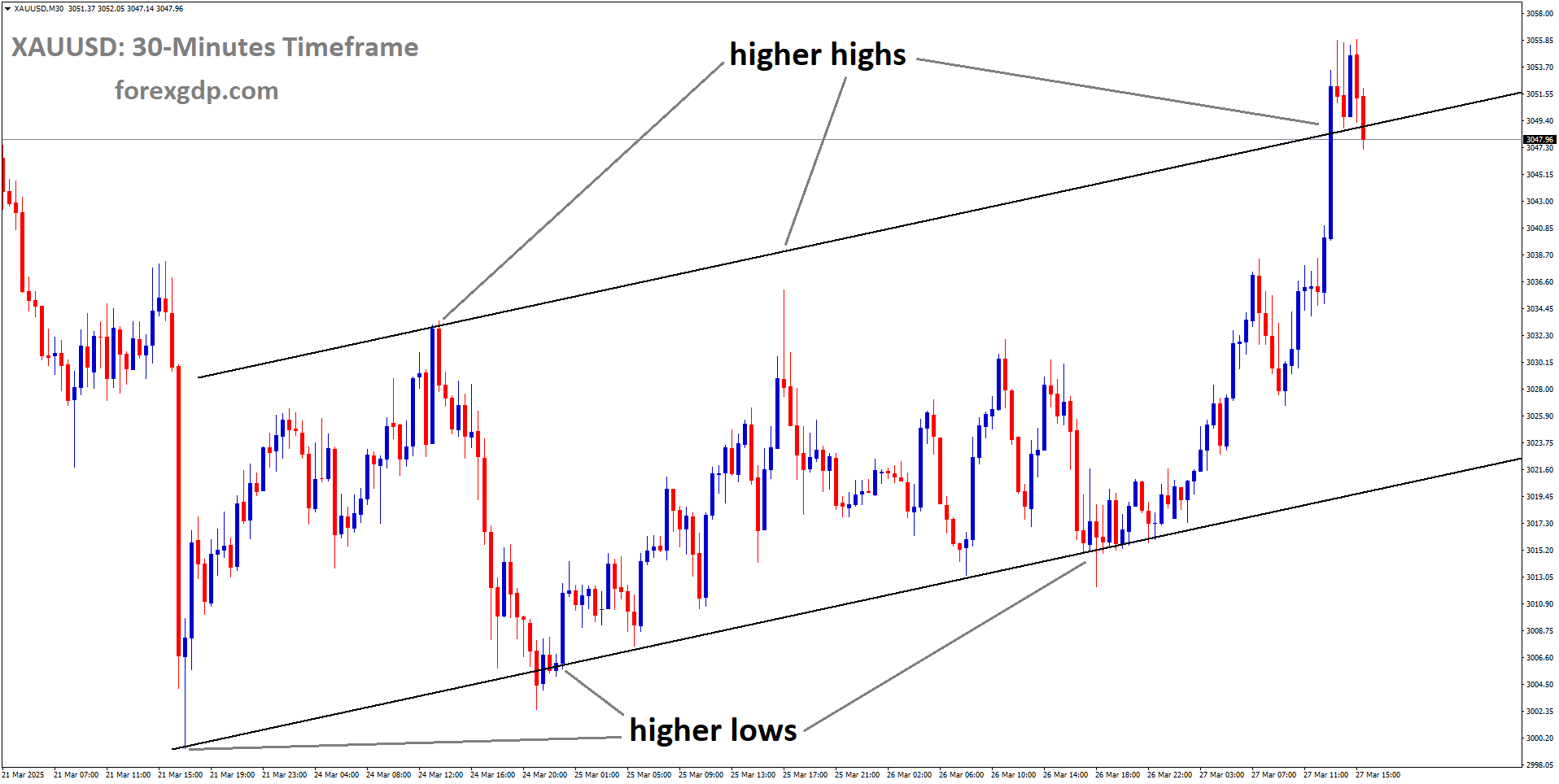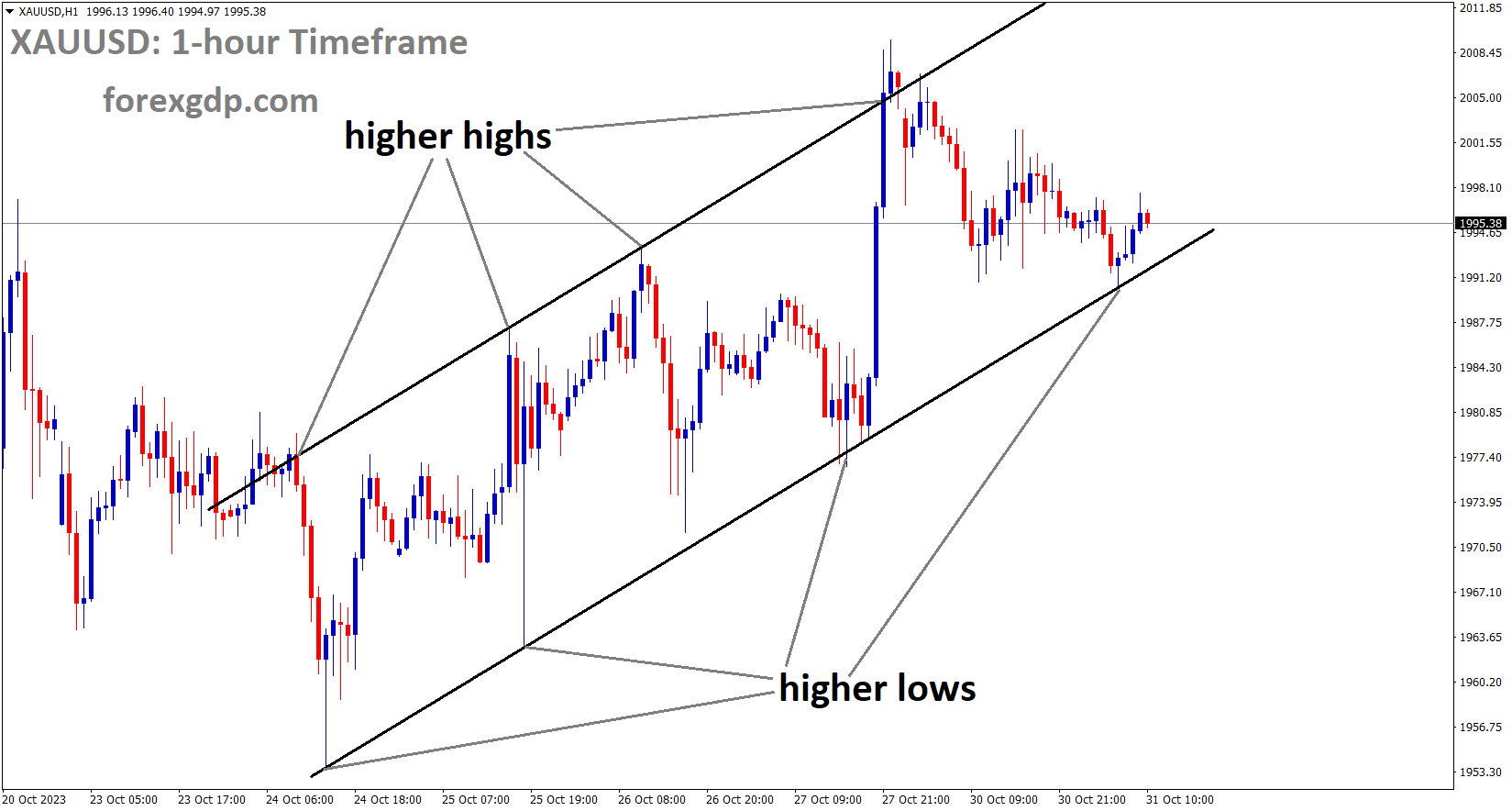XAUUSD is falling from the retest area of the broken uptrend channel
The US Federal Reserve meeting is always a key event, especially for investors, businesses, and economists worldwide. This time around, even though everyone expects the Fed to keep interest rates steady, what really matters is the hidden clues in Fed Chair Jerome Powell’s statements. Investors are eagerly looking for signs that rate cuts might happen sooner rather than later, possibly starting this September.
Let’s dive into the main things you should keep an eye on regarding the US Fed’s decisions and the potential impact on your investments.

The Economic Growth Scenario
Understanding the economy is crucial when anticipating the Fed’s moves. Recently, growth in the US hasn’t exactly been booming, but it hasn’t been struggling severely either.
Back in the first quarter, the economy did shrink slightly by 0.5%. However, this dip isn’t considered significant enough to push the Fed toward immediate rate cuts. Interestingly, the IMF (International Monetary Fund) is feeling positive, recently raising its growth predictions for the US economy to 1.9% in 2025 and even better, 2% for 2026. This optimism comes from tax breaks designed to boost corporate investments.
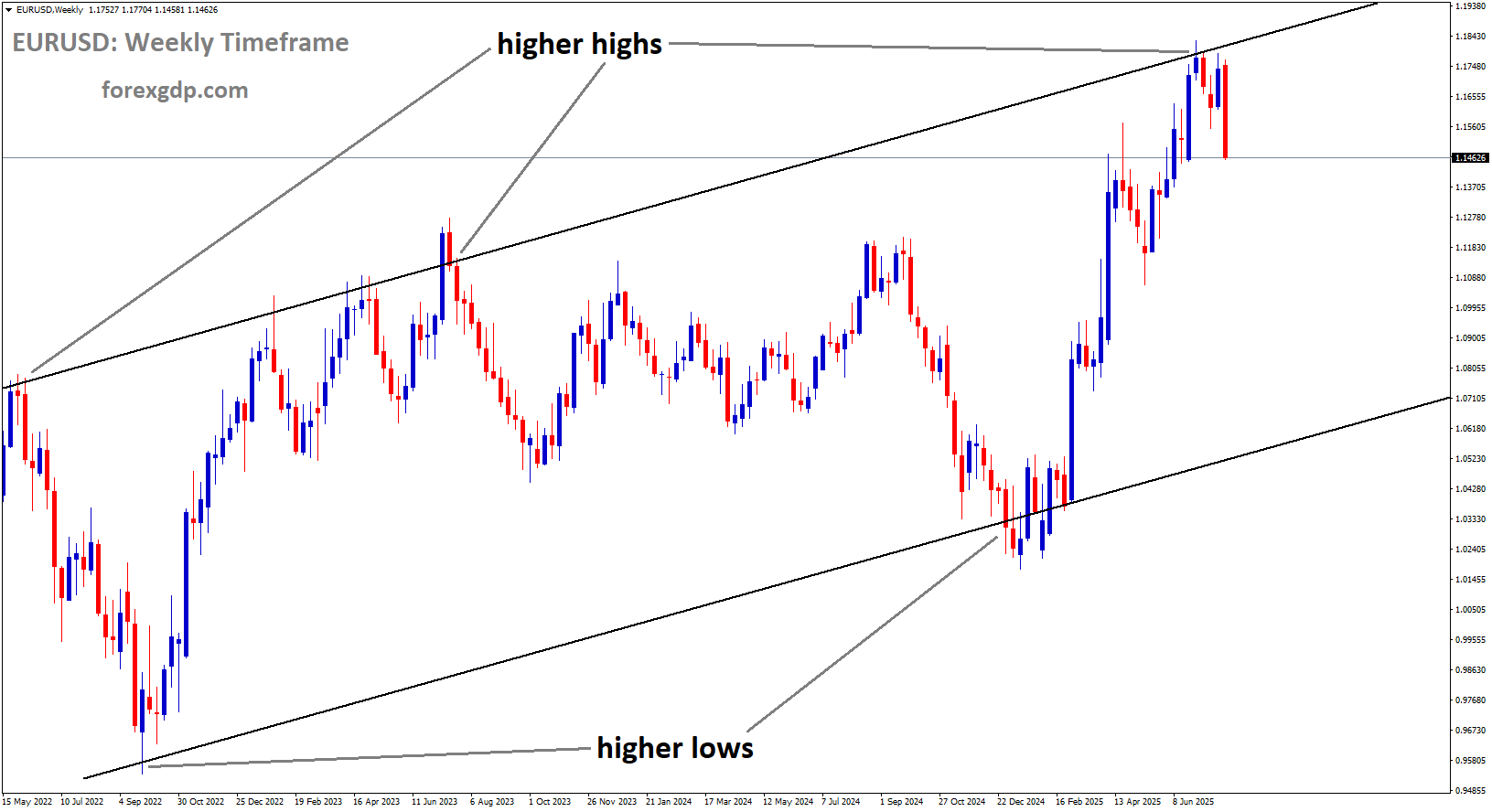
EURUSD is moving in an Ascending channel, and the market has fallen from the higher high area of the channel
Still, the Fed remains cautious. They’ve lowered their growth expectations due to worries about tariffs introduced by former President Donald Trump. These tariffs could potentially slow down economic growth in the future. That’s why Powell and his team will closely monitor growth signals before making major policy shifts.
The IMF’s Optimistic Take
The IMF’s positive outlook suggests that the US economy might handle the trade tensions better than expected. This optimism could encourage the Fed to keep rates steady until clearer economic patterns emerge.
Inflation: Still a Sticky Situation
Inflation continues to be a major factor influencing the Fed’s decision-making. Recently, the US Consumer Price Index (CPI)—a key measure of inflation—rose from 2.4% to 2.7%, slightly higher than experts predicted.
While another inflation measure, the Producer Price Index (PPI), has shown a slight decline, overall inflation is still hovering above the Fed’s target of 2%. This situation complicates matters because the Fed aims to keep inflation under control without stifling economic growth.
Why Inflation Matters
High inflation typically prompts the Fed to raise interest rates to cool things down, while lower inflation can lead to rate cuts to encourage economic activity. With tariffs adding unpredictability, the Fed might adopt a wait-and-see approach to ensure they don’t make moves that might worsen inflation pressures.
Moreover, trade agreements with countries like India and China, despite being actively pursued, haven’t completely erased tariff-related uncertainties. Tariff rates could stay relatively high, keeping the inflation pressure intact.
The Job Market: Stable but Not Immune
The US job market has consistently been a bright spot, showing resilience even in uncertain times. However, recent data points to slight weakness creeping in. The JOLTS report, which tracks job openings, showed a decline in available positions, dropping significantly in June compared to the previous month.
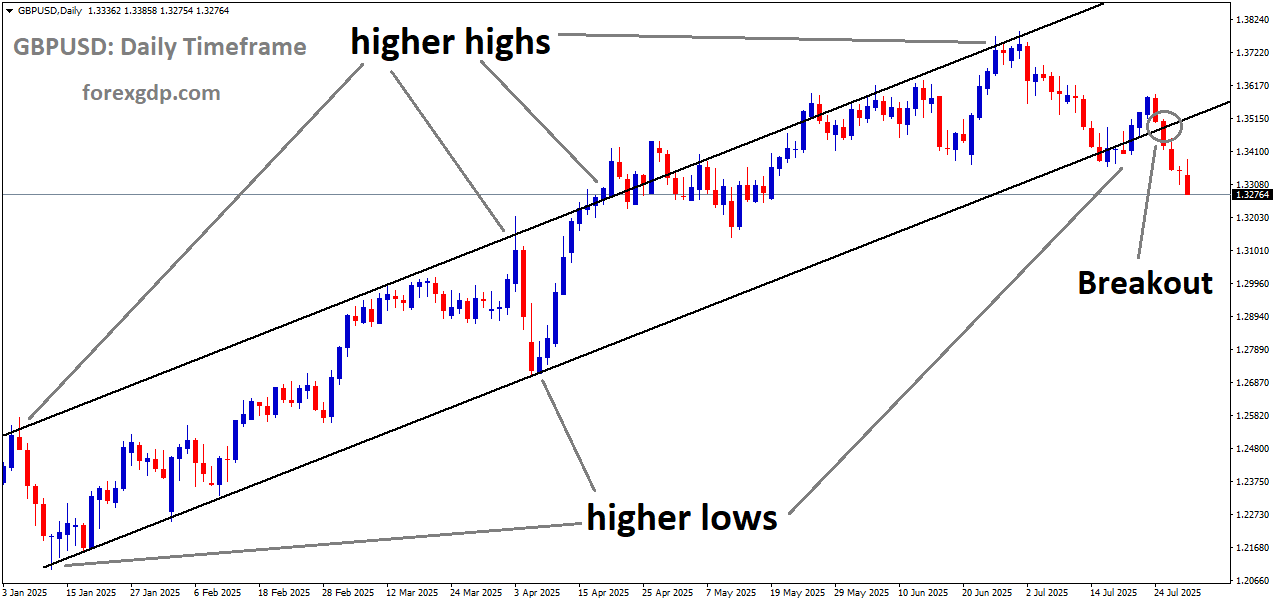
GBPUSD has broken the Ascending channel on the downside
Though these numbers might seem concerning, the US job market is far from crisis mode. Employment remains stable, and wage growth continues, albeit moderately. Yet, there’s a cautious undertone, especially since the full impact of tariffs and trade tensions hasn’t been entirely felt yet.
What the Fed Sees in Job Data
The Fed closely watches job data because employment strongly affects consumer spending—the backbone of the US economy. Any sustained weakness in employment data could push the Fed toward cutting rates to support the economy.
Current Financial Market Conditions
Right now, financial markets are relatively calm. US stock markets are performing strongly, hovering around record highs, and bond yields have remained fairly stable. Typically, market stability means less immediate pressure for the Fed to change interest rates.
Still, the Fed doesn’t make decisions based solely on market movements. They look at the broader economic landscape and long-term stability. Unless there’s a significant market shock, financial market conditions alone probably won’t push the Fed into action anytime soon.
Tariffs and Trade Wars: The Big Wild Card
Tariffs continue to be the largest source of uncertainty for the Fed. Despite several trade deals made and ongoing negotiations, Trump-era tariffs continue to impact economic forecasts. Tariffs make imports more expensive, potentially driving up inflation and affecting consumer spending.
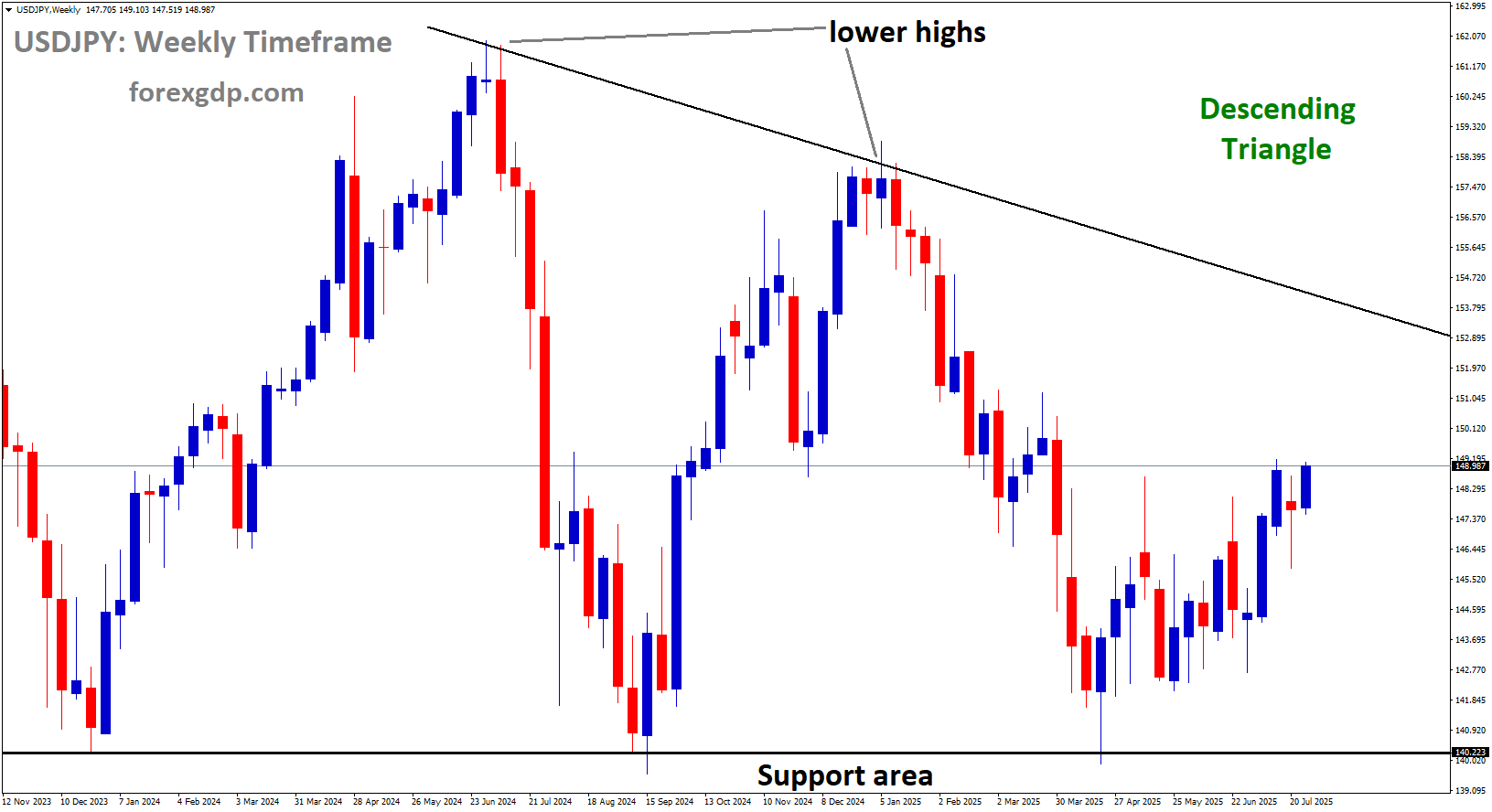
USDJPY is moving in a Descending Triangle pattern, and the market has rebounded from the support area of the pattern
Jerome Powell and his team will closely monitor how these tariffs evolve. Any sudden escalations or improvements could significantly influence the Fed’s next moves. The unpredictability associated with these tariffs makes forecasting challenging, adding extra caution to Fed policy decisions.
Why Tariffs Matter So Much
Tariffs don’t just impact inflation—they also affect overall economic confidence. Businesses might hold back on investments, fearing increased costs and uncertainty. Consumers could tighten their wallets due to higher prices. These actions together could slow economic growth significantly, leading the Fed to step in earlier with rate adjustments.
What Investors Should Do Now
As an investor, it’s vital to stay informed but not panic. Understanding these key factors will help you make better decisions. Keep an eye on Powell’s commentary after the meeting, focusing particularly on any hints he might give about future rate cuts.
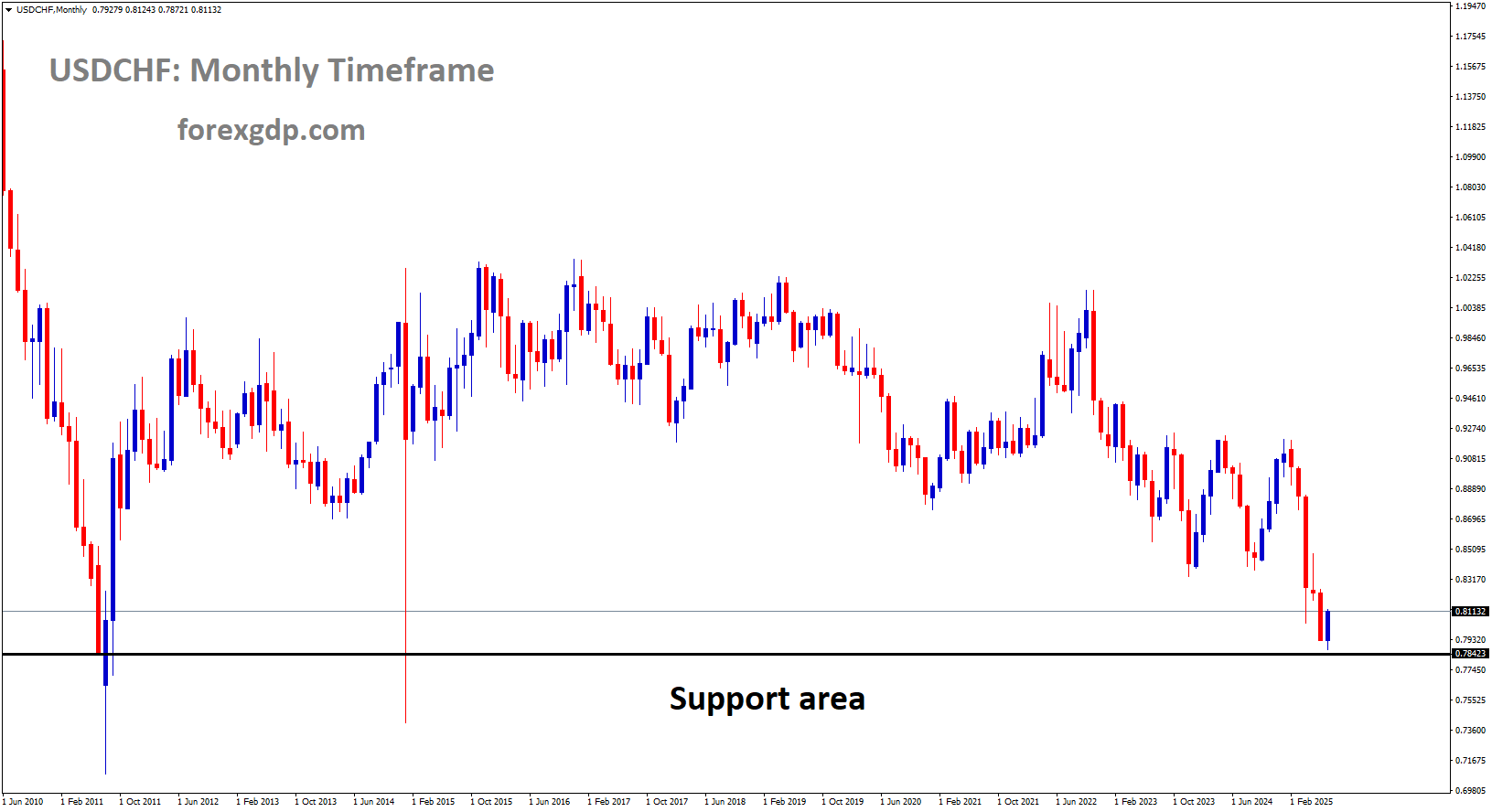
USDCHF has reached a major support area
Additionally, maintaining a diversified investment portfolio will help weather uncertainties. Stay cautious, but don’t react emotionally. Financial stability often comes from thoughtful decision-making and patience, especially during uncertain times.
Final Summary
Investors are closely watching the Fed’s next move, particularly Jerome Powell’s remarks, for clues about possible rate cuts. Key factors such as economic growth, inflation, employment stability, financial market conditions, and ongoing tariffs are central to the Fed’s decisions. With the economy facing several uncertainties, the Fed is expected to keep rates unchanged for now, adopting a cautious stance until the picture becomes clearer. Investors should remain calm, informed, and cautious, ensuring their strategies can withstand market fluctuations influenced by these key economic factors.
Don’t trade all the time, trade forex only at the confirmed trade setups.
Get Live Free Signals now: forexgdp.com/forex-signals/

